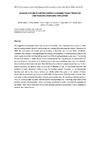Identificador persistente para citar o vincular este elemento:
https://accedacris.ulpgc.es/jspui/handle/10553/21034
| Campo DC | Valor | idioma |
|---|---|---|
| dc.contributor.author | Marco, Adolfo | en_US |
| dc.contributor.author | López, Óscar | en_US |
| dc.contributor.author | Abella Pérez, Elena | en_US |
| dc.contributor.author | Varo-Cruz, Nuria | en_US |
| dc.contributor.author | Martins, Samir | en_US |
| dc.contributor.author | Gaona, Pilar | en_US |
| dc.contributor.author | Sanz, Paula | en_US |
| dc.contributor.author | López-Jurado, Luis Felipe | en_US |
| dc.date.accessioned | 2017-03-22T03:30:35Z | |
| dc.date.accessioned | 2018-06-18T06:46:03Z | - |
| dc.date.available | 2017-03-22T03:30:35Z | |
| dc.date.available | 2018-06-18T06:46:03Z | - |
| dc.date.issued | 2010 | en_US |
| dc.identifier.uri | https://accedacris.ulpgc.es/handle/10553/21034 | - |
| dc.description.abstract | The loggerhead population from Cape Verde is one of the most important in the world. Turtles nest on several island from this archipelago but around 90% are using the island of Boavista. In 2000 the estimation of annual nesting females in Boavista was around 5000 individuals. However, the capture of nesting females for human consumption is widespread practice in the local populations that could be killing more than 25% of nesting females every year. The decline of turtle abundance in other islands is now increasing the hunting pressure on individuals that nest on Boavista. During the 2007 nesting season we have estimated that only 3000 females have nested on the island and more than 8000 have been killed in unprotected beaches. To this severe mortality we have to add the capture of females at sea. On protected beaches the number of nest remained stable during the nesting season. However, on non-protected beaches and due to the strong nesting site fidelity within the season, the number of nest drastically decreased during the second half of the nesting seasons. Thus, it is not possible to guarantee the survival of any female by protecting only some of the nesting beaches. Demographic models are being calculated in order to predict the population dynamics, the risk of extinction in the next decades and the conservation criteria need to reverse the current trends. | en_US |
| dc.format | application/pdf | es |
| dc.language | eng | en_US |
| dc.source | 28th ISTS Symposium on Sea Turtle Biology and Conservation, Loreto, BCS, México, january 2008, p. 93-94 | en_US |
| dc.subject | 24 Ciencias de la vida | en_US |
| dc.subject | 2401 Biología animal (zoología) | en_US |
| dc.subject | 240116 Herpetología | en_US |
| dc.title | Massive capture of nesting females in severely threatening the Caboverdian loggerhead population | en_US |
| dc.type | info:eu-repo/semantics/conferenceObject | en_US |
| dc.type | ConferenceObject | es |
| dc.investigacion | Ciencias | en_US |
| dc.rights.accessrights | info:eu-repo/semantics/openAccess | es |
| dc.type2 | Actas de congresos | en_US |
| dc.identifier.ulpgc | Sí | es |
| item.grantfulltext | open | - |
| item.fulltext | Con texto completo | - |
| crisitem.author.orcid | 0000-0001-6380-6130 | - |
| crisitem.author.fullName | López Jurado, Luis Felipe | - |
| Colección: | Actas de congresos | |
Visitas
68
actualizado el 08-jul-2023
Descargas
30
actualizado el 08-jul-2023
Google ScholarTM
Verifica
Comparte
Exporta metadatos
Los elementos en ULPGC accedaCRIS están protegidos por derechos de autor con todos los derechos reservados, a menos que se indique lo contrario.
